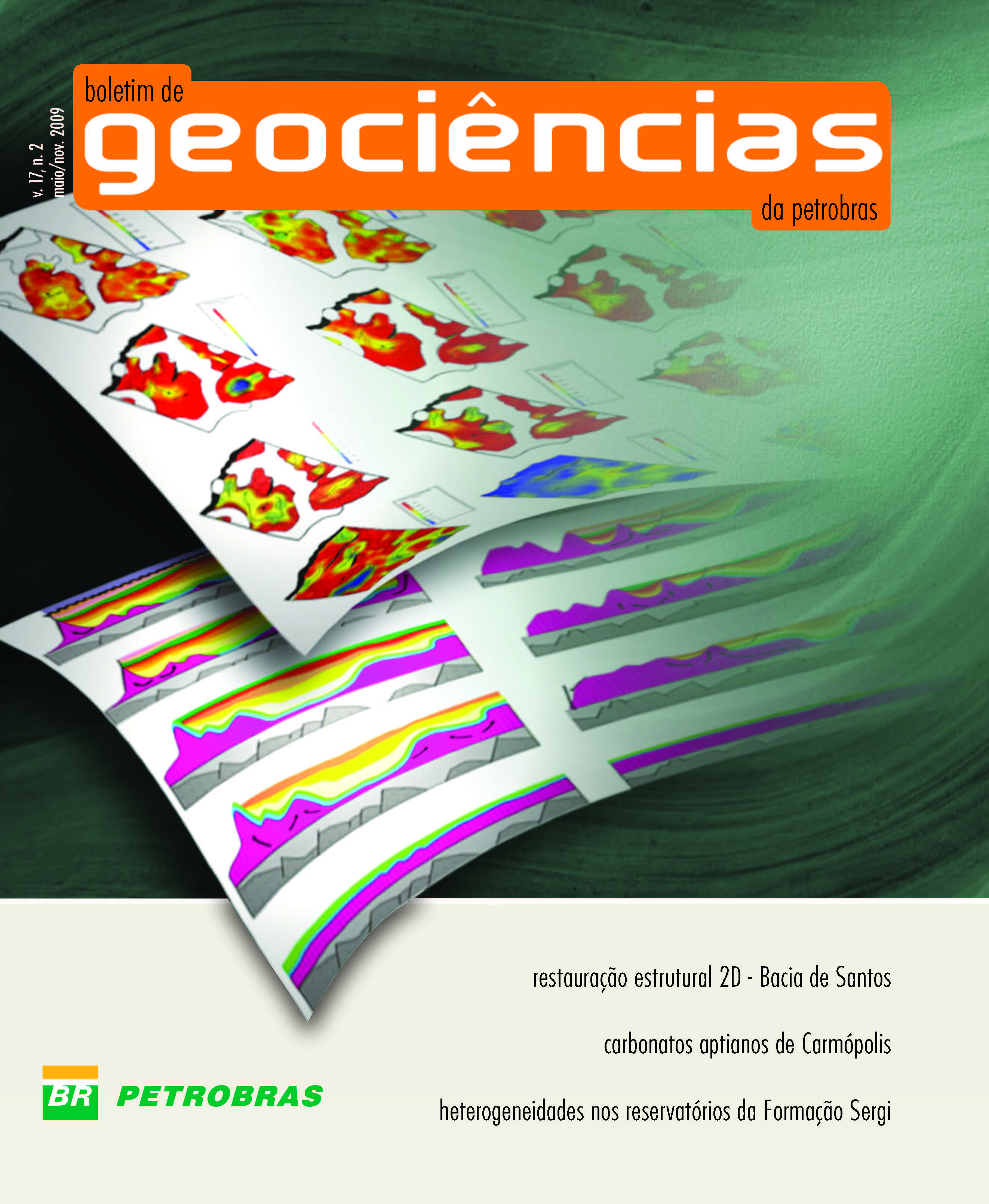South Atlantic Aptian paleogeography: a new model based on recent Brazilian micropaleontological data
Keywords:
Paleogeography, Micropaleontology, South Atlantic, Cretaceous, AptianAbstract
Paleobiogeographic differentiation of South Atlantic microfossil assemblages during the Aptian is the result of physical barriers related to a structural lineament made up of the São Paulo Dorsal and Florianópolis High, which prevented the free circula-tion and mixing of marine water between the southernmost South Atlantic and the remainder of that ocean. This gave rise to two distinct biotas on each side of the aforementioned barrier, which persisted until the end of the Albian. From Aptian to Albian, all the Brazilian Atlantic Margin Basins – except its southernmost part (Pelotas Basin) – were flooded by water from the Central Atlantic. This study, which focused on dinoflagellate paleobiogeography, indicates that Aptian dinocyst records North of the barrier consist of geographically restricted occurrences of a low-diversity assemblage related to Subtilisphaera blooms. Here, marine paleoenvironments range from predominantly evaporitic (in the Brazilian East Margin Basins) to paralic (in the Brazilian Equatorial Margin Basins). The results confirm that the Aptian transgression, in most of these basins, was fed by Tethyan water from the Central Atlantic, reaching as far South as the Santos Basin. This inference relies on the geographic distribution of Subtilisphaera bloom records, combined with further marine sedimentation evidence – e.g.: Aptian evaporites; various marine fossils occurrences in the Araripe Basin and radiolarians in the Areado Formation (São Francisco Basin); and geochemical data from the Codó and Alagamar formations (respectively in the Parnaíba and Potiguar Basins). The São Paulo Dorsal-Florianópolis High lin-eament prevented Tethyan water from reaching the Pelotas Basin to the South, where open marine conditions are confirmed by fairly diverse dinoflagellate assemblages containing over 20 species. Amongst these are Tenua americana and Occisucysta victorii, both of which are endemic and characteristic of the Austral Microflora, thus indicating that the Pelotas Basin was part of the southernmost South Atlantic during the Aptian. The northern and southernmost South Atlantic were first connected in the Albian, but the influence of the São Paulo Dorsal-Florianópolis High lineament persisted until the latest Albian.
Downloads
Published
Issue
Section
License

This work is licensed under a Creative Commons Attribution 4.0 International License.
This license enables reusers to distribute, remix, adapt, and build upon the material in any medium or format, so long as attribution is given to the creator. The license allows for commercial use.



